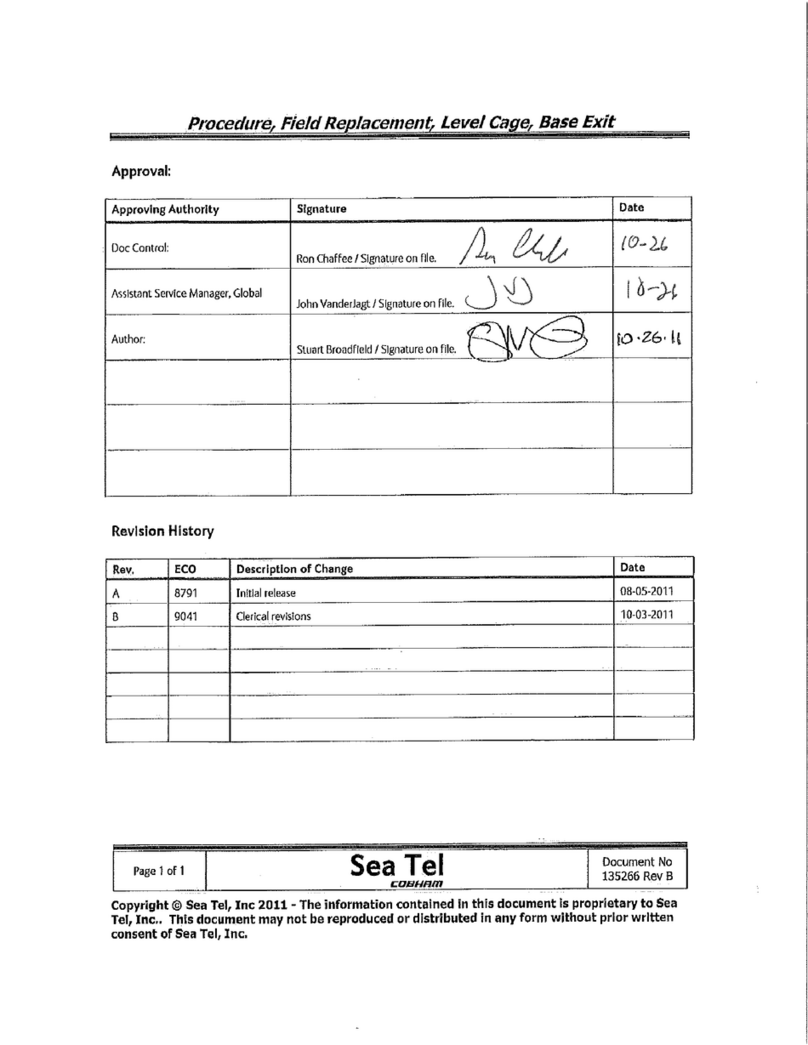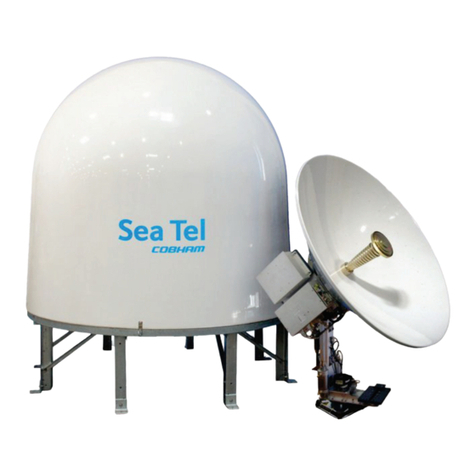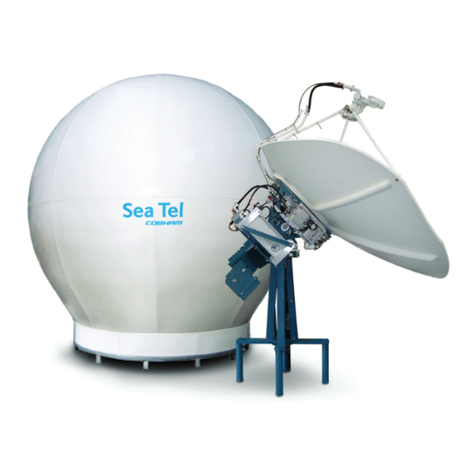
Table of Contents
1. INTRODUCTION ..........................................................................................................................................................................................1-1
1.1. GENERAL DESCRIPTION OF SYSTEM ........................................................................................................................................................... 1-1
1.2. PURPOSE ..........................................................................................................................................................................................................1-1
1.3. SYSTEM COMPONENTS ................................................................................................................................................................................. 1-1
1.4. DUAL ANTENNA CONFIGURATION............................................................................................................................................................. 1-2
1.5. DUAL ANTENNA ARBITRATOR.....................................................................................................................................................................1-3
1.6. GENERAL SCOPE OF THIS MANUAL.............................................................................................................................................................. 1-3
1.7. QUICK OVERVIEW OF CONTENTS................................................................................................................................................................ 1-3
2. SITE SURVEY..................................................................................................................................................................................................2-1
2.1. SITE SELECTION ABOARD THE SHIP .......................................................................................................................................................... 2-1
2.2. ANTENNA SHADOWING (BLOCKAGE)AND RF INTERFERENCE .............................................................................................................. 2-1
2.3. MOUNTING FOUNDATION ........................................................................................................................................................................... 2-2
2.3.1. Mounting on Deck or Deckhouse......................................................................................................................................2-2
2.3.2. ADE Mounting Considerations...........................................................................................................................................2-2
2.3.3. Sizing of the support pedestal............................................................................................................................................2-2
2.4. MOUNTING HEIGHT AND FORE-AFT LOCATION ..................................................................................................................................... 2-3
2.5. MAST CONFIGURATIONS .............................................................................................................................................................................2-4
2.5.1. Vertical Masts ..............................................................................................................................................................................2-4
2.5.2. Raked Masts..................................................................................................................................................................................2-4
2.5.3. Girder Masts .................................................................................................................................................................................2-5
2.5.4. Truss Mast .....................................................................................................................................................................................2-5
2.6. SAFE ACCESS TO THE ADE.......................................................................................................................................................................... 2-5
2.7. BELOW DECKS EQUIPMENT LOCATION ..................................................................................................................................................... 2-5
2.8. CABLES.............................................................................................................................................................................................................2-6
2.8.1. ADE/BDE Coaxial Cables........................................................................................................................................................2-6
2.8.2. Antenna Power Cable ..............................................................................................................................................................2-6
2.8.3. Air Conditioner Power Cable ...............................................................................................................................................2-6
2.8.4. ACU Power Cable/Outlet........................................................................................................................................................2-7
2.8.5. Gyro Compass Cable................................................................................................................................................................2-7
2.8.6. Grounding......................................................................................................................................................................................2-7
3. INSTALLATION.............................................................................................................................................................................................3-1
3.1. GENERAL CAUTIONS &WARNINGS ........................................................................................................................................................... 3-1
3.2. SITE SELECTION ABOARD SHIP ................................................................................................................................................................... 3-2
3.3. PREPARATION .................................................................................................................................................................................................3-2
3.4. OPENING YOUR CRATES ................................................................................................................................................................................ 3-2
3.4.1. Location of Items inside the Crates.................................................................................................................................3-3
3.4.2. Base Frame and Reflector Crate........................................................................................................................................3-3
3.4.3. Pedestal Crate .............................................................................................................................................................................3-4
3.4.4. Radome Crate:.............................................................................................................................................................................3-5
3.5. UNPACKING THE BASE FRAME AND REFLECTOR CRATE ......................................................................................................................... 3-5
3.6. UNPACKING THE PEDESTAL CRATE ............................................................................................................................................................ 3-8
3.7. UNPACKING THE RADOME CRATE: ...........................................................................................................................................................3-10
3.8. ASSEMBLING THE ADE...............................................................................................................................................................................3-11
3.8.1. Preparing for Assembly of the ADE ..............................................................................................................................3-11
3.8.2. Sub-assemble the Base Frame Assembly...................................................................................................................3-11
3.8.3. Sub-assemble the bottom panels of the 144” Radome Assembly................................................................3-12
3.8.4. Sub-assemble the upper panels of the 144” Radome Assembly ...................................................................3-16
EAR Controlled - ECCN EAR99














































